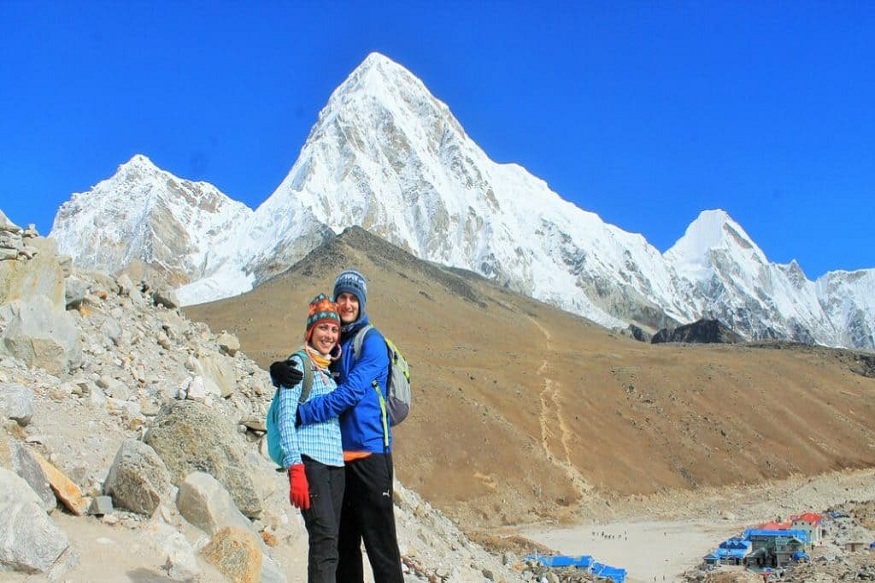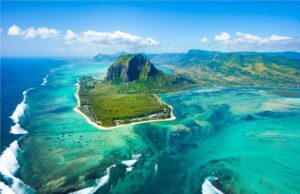Trekking to Everest Base Camp is a dream for many adventure seekers, and with Sherpa Expedition and Trekking, this adventure remains an organized and distressing journey. There are a number of factors to keep in mind to ensure you are ready to tackle the challenges on your trek to Everest Base Camp successfully. This expansive guide breaks down everything you need to know before you set sail on this once-in-a-lifetime adventure.
Trek To Base Camp Mount Everest The first stage of preparing for your trek is to book with a reliable agency, like Sherpa Expedition and Trekking, which can manage logistics, including securing permits, transportation, and accommodation, as well as hiring qualified Sherpa guides and porters. When everything in life is planned out (it should be planned out before going on a trip), you can focus on the adventure itself, and that brings peace of mind.
Physical Preparation: Physical preparation is key before your trek. The Everest Base Camp trek is a non-technical trek, difficult in terms of endurance, stamina, and walking for extended periods at high altitudes. Do daily cardio, lift some weights, and hike up hills. Prioritize acclimatization, so take your time on the trek and schedule rest days to help your body adjust to the thinning air. Your Sherpa guide will make sure you are trekking at a safe pace and will closely monitor your health.
www.packd.comPacking for another must-do in your preparation, Sherpa Expedition and Trekking will give you a suggested packing list that includes sturdy hiking boots, warm clothing, and necessary gear for the unpredictable weather. Be prepared for cold temperatures, especially in higher elevations.
When you arrive in Kathmandu, you will meet your guide and the porters (who carry gear along the trek) and receive a pre-trek briefing, ensuring that you understand what the route entails and what to expect. It starts with a flight to Lukla and a trek through picturesque Sherpa villages, dense forests, and breathtaking mountain vistas. Trekking to Everest Base Camp with Sherpa Expedition and Trekking, you’ll see amazing views of the Himalayas, experience the Sherpa culture, and marvel at coming away with such an amazing accomplishment upon reaching the base camp, with the right preparation and experienced professionals looking after you.
Everest Base Camp Trek Overview
We are become of the top trekking experiences worldwide in the Everest base camp trek. This trek, situated in Nepal, leads wanderers through mesmerizing vistas, delightful Sherpa communities, and gorgeous high-altitude terrains, finally ending at the foothills of Mount Everest, the tallest point on the planet. The trek usually takes 12 to 14 days from the town of Lukla to reach Everest Base Camp at 5,364 meters (17,598 feet). As they trek, they’re surrounded by the beauty of the Himalayas, taking in sweeping views of Everest, Lhotse, Nuptse, and other towering summits along the way. The trip is also a cultural immersion into the daily life of the Sherpa people, who are known for their mountaineering skills. The walk does require some effort, especially because of the height, and it should be done again with good acclimatization. The EBC trek is one of the most rewarding experiences, despite its challenges, incorporating natural beauty and adventure.` Trekking to Everest Base Camp is a bucket list adventure for many, being a symbolic achievement for trekkers from all over the world.
Why You Should Choose Sherpa Expedition and Trekking
Trekking to Everest base camp success and enjoyment depend wholly on the trekking company that you choose, so Sherpa Expedition and Trekking is one of the most reputable and trusted names in Himalayan trekking. Sherpa Expedition and Trekking is a widely recognized trekking service provider in Nepal, and has been serving in the industry for more than a decade. With a team of highly skilled Sherpa guides, experienced trekking staff, and hardworking porters, the company ensures every trekker has a safe, comfortable, and culturally rich experience. Sherpa Expedition and Trekking is known for its responsible tourism practices, with an emphasis on sustainability and supporting local communities. They have well-structured packages that can be customized according to the needs of trekkers from all levels- beginners or professionals. When you trek the Himalayas with Sherpa Expedition and Trekking, you can expect not only professional guides and support throughout your trek, but you are also choosing a company that values cultural sensitivity, safety, and adventure in the Himalayas. Whether it’s a guided trek or a custom experience, the Everest Base Camp Trek with Sherpa Expedition and Trekking will guarantee you an inspirational adventure.
Get Physically and Mentally Ready
Everest Base Camp trek is not only about physical preparation but also about mental preparation. Because of the treacherous environment and high-altitude climate, trekkers must be fit enough to endure the stress of walking every day, often well above 4,000 meters. Cardiovascular fitness is key, so try to take on activities in the months leading up to your trek, like hiking, running, cycling, or swimming, to help build those stamina levels. Along with that, some resistance training exercises that build strength in the legs, core, and upper body will also aid in carrying a backpack and moving over uneven terrain. Flexibility and balance exercises can also help prevent injuries and can aid agility on rocky paths. Preparing mentally is just as critical. Because of the nature of things, long trekking days, hiking at a high altitude, and isolation, the Everest Base Camp trek can be mentally exhausting. It is important to start preparing for days that are going to be difficult while keeping yourself in the best state of positivity and goal-oriented. Mental fortitude, endurance, and patience will get you through any challenges you may face like altitude sickness or less-than-ideal weather conditions. Plus, taking it slow on the trek and adjusting to the contrasts along the way will help you make the most of the experience while minimizing risks. A combination of physical training and mental preparedness will ensure an enjoyable trek to Everest Base Camp.
Gear and Packing List — What Essential Gear Do You Need?
Packing the right gear is crucial for comfort and safety during the trek. Since temperatures vary from warm in the lower altitudes to freezing in the higher elevations, layering is key. Essential gear: Sub-zero rated sleeping bag, waterproof windproof jacket, thermal clothing for warmth, and correct remote working equipment. You need a sturdy, lightweight backpack to carry your gear, and hydration systems or water bottles to keep you hydrated. Good hiking boots, which are broken in and waterproof, offer support and protection from rough terrain. Trekking poles are essential too, as they will provide stability on uneven ground and relieve pressure on your knees during downhill sections. And don’t forget your sunscreen, wide-brimmed hat, and sunglasses, even higher on the mountain where UV rays are more intense. Personal hygiene items (wet wipes, hand sanitizer) and a first aid kit for minor injuries/ailments. It’s also important to carry extra batteries for cameras and headlamps, and portable chargers. The Everest Base Camp Trek is no small feat, and catering for extreme environments and changing weather while packing light is important; Tips to Acclimatize / About Altitude
Everest Base Camp Treks Acclimatization is an important aspect when it comes to trekking to Everest Base Camp, as it enables your body to adapt to lower levels of oxygen present at higher altitudes. Altitude sickness can hit with a lack of acclimatization — headaches, dizziness, and nausea, all of which can jeopardize your trek. The best way to acclimatize is through the “climb high, sleep low” principle. That means hiking up a higher elevation during the day and coming down to a lower altitude to sleep at night.
With this in mind, Sherpa Expedition and Trekking incorporates acclimatization days into its trekking itineraries so your body can adjust. Also, it is vital to drink a lot of water on all parts of the trek and keep a slow and steady pace on the steeper sections. Never overexert yourself, as this may increase the risk of altitude sickness. Filling your stomach with small meals, high-energy foods, and ensuring adequate rest will also enable your body to adapt to the altitude.
If you begin to feel signs of altitude sickness, make sure to let your guide know right away. The guides are trained to recognize early symptoms and will take proper precautions, even descending to a lower altitude if required. By following these acclimatization tips, you will give yourself the best chance of completing the trek successfully with the lowest health risk.
An Explanation of the Trekking Itinerary
Knowing the itinerary for the Everest Base Camp trek will help prepare both your mental and physical condition before going on the adventure. Most Everest Base Camp treks take about 12 to 14 days, including acclimatization days, to allow a gradual ascent and minimize the risk of altitude sickness. The general itinerary includes a flight to Lukla from Kathmandu, followed by a few days of trekking through beautiful Sherpa villages such as Phakding and Namche Bazaar.
The first days of the trek are at fairly low elevations, allowing trekkers to acclimatize before heading to higher elevations. The acclimatization days, which are usually included in the plan in places like Namche Bazaar and Dingboche, are one of the important features of the route. These days allow trekkers to rest or acclimatize, but also to visit the area at a higher altitude without straining themselves.
The higher you move, the more difficult the trek will be because of the increasing altitude, but the views on the way, with the high Himalaya peaks such as Lhotse, Nuptse, and Everest itself, are mesmerizing. The last portion of the journey is the trek to Everest Base Camp, a feeling of accomplishment like no other. Due to altitude and challenging terrain, it is helpful to realize that the pace of the trek is slower than most hikes. Your Sherpa guides will help ensure you’re taking the proper itinerary to maximize your safety and enjoyment.
Health and Safety Guidelines
Health and Safety gathered for a trek to Everest Base Camp. A medical checkup is an important thing to get done before heading into the trek to make sure that you are physically capable of taking on the fizzy challenge. If you have underlying conditions like heart problems or lung issues, you should discuss with a physician and weigh whether the trek is safe for you.
Mount Everest base camp Trek So keep yourself hydrated throughout the trek because dehydration can contribute to altitude sickness as well as fatigue. Drink ample water daily (have a good water purification system) from brands available. A wholesome diet, high in carbs and protein, will supply the energy required to get through the day of hiking.
It is important to note that altitude sickness is a common concern, but can be managed by adhering to the general principles of gradual acclimatisation and listening to your body. Your Sherpa guide will check your health regularly and have emergency plans in place, should any health issues arise. The guides are first-aid trained and accustomed to altitude-related issues.
Emergency evacuation is possible, but medical services in the Everest region are limited. It is strongly recommended that you have full travel insurance, including emergency evacuation, so that you are ready for the unexpected. If you stick to these health and safety guidelines, you will find yourself in good condition for your long trek.
What to Expect on the Trek
It is both a difficult and rewarding experience, as shown in the Everest Base Camp trek. Follow the trail, so to speak, as you trek through fertile woodlands, Sherpa settlements, through rocky ascents deeper into the Himalayas. The route will test your stamina, but it will also reward you with beautiful vistas of the mountains, glaciers, and the surrounding area.
The journey starts with a breathtaking flight from Kathmandu to Lukla, before traversing the lower-altitude villages of Phakding and Namche Bazaar. Going up, the ground is steeper, the air is thinner, and it is important to work with your rhythm. Plan to take it slow, especially at higher altitudes, where you will need to acclimate.
On this route, you will pass through beautiful villages and meet with Sherpa people, visit monasteries to experience the vibrant Buddhist culture. The scenery on the trek is also becoming more spectacular, with more and more high peaks on display, such as Lhotse and Nuptse, and the famous top of the world, Mount Everest.
It’s a physically strenuous trek, with days filled with walking, and the feeling you get from reaching base camp is incredible. When trekking, you may also meet fellow travelers, and the camaraderie on the road is often one of the best parts of the experience. Expect basic accommodation in teahouses, with shared rooms and communal dining areas, although the Sherpas’ warm hospitality will outweigh any discomfort.
Final Note to Get You through Smoothly
The Everest Base Camp is all about careful preparation and a great attitude to help ensure a great experience. First and foremost, physical fitness. You don’t need to be a marathoner, but solid cardiovascular and strength training, plus practice on the trail, will prepare you to crush it. Preparing For The Long Days of Walking
Another tip is to pack smart. Structure your gear list so only must-haves make it to the pack, keeping the weight off. High-quality, layered clothes, good hiking boots, a good sleeping bag, and water purification tablets are all necessary. Also, if at all possible, pack light, since a heavy backpack will slow you down and fatigue you more quickly.
One of the best ways to give yourself a good chance at acclimatization and reduce the risks of altitude sickness is to take it slow and steady. Take your time; allow yourself ample opportunity for rest and to stay hydrated along the way. Talk to your guide if you start to feel unwell, as catching it early is essential in mitigating serious issues.
Well, finally, be psychologically prepared for what is to come. Hiking to Everest Base Camp is a unilateral effort, but it’s equally fulfilling. And that’s all you need to focus on, really, as you take in all of the stunning views and interact with the Sherpa people on your journey. If you’re well-prepared, have the right mindset, and build a solid support system, your trip to Everest Base Camp will be an adventure for the ages. Layering correctly will give you the right balance needed to survive the challenges of the trek without compromising your comfort and safety.
Required Permits and Documentation
All trekkers embarking on the Everest Base Camp Trek are required to obtain the appropriate permits and documentation before trekking in the region legally and safely. The two primary permits needed to materialize the trek are a TIMS (Trekkers’ Information Management System) card and a Sagarmatha National Park entry permit. The TIMS has been issued by the Trekking Agencies Association of Nepal (TAAN), which helps track trekkers in the area for safety purposes, and the Sagarmatha National Park Permit gives access to the protected park area, which includes Everest Base Camp and surrounding areas. Both permits are available through Sherpa Expedition and Trekking, or at authorized offices in Kathmandu or Lukla. Moreover, trekkers arriving at Lukla by air should book their flight in advance, and for that, you will need a valid passport along with a copy of your flight ticket. You will need to have these documents with you on the trek because there are checkpoints along the way that will ask to see your permits. Some trekkers opt to organize permits themselves, but if you’re booking a trek through a professional company (like Sherpa Expedition and Trekking), deal with the permits and logistics on their end. Making sure you have all the correct paperwork before you leave will save you time and hassle so that you can concentrate on the trip that awaits you.
How fit do you need to be to do Everest Base Camp?
Himalayan Base Camp Trek requires physical fitness, but you don’t need to be an elite athlete to do it. Its demands are mostly related to altitude, needing a considerable amount of endurance and stamina, along with long daily walking hours. You need to be in decent shape, but more importantly, you need the right attitude and fitness to do the long day hikes, which can be between 5 to 8 hours a day. Cardiovascular conditioning, like walking, hiking or running, is crucial for stamina, and strength training, especially in your legs and core, will help you with the uneven terrain.
Acclimatization is no less important than physical fitness because you will go to high altitudes where the air is thin. The trek includes multiple days at high altitude, and you need to pace yourself to avoid altitude sickness. Previous hiking experience isn’t necessary, but walking uphill with a backpack can mimic some of the challenges of the trek. If you’re generally healthy and can walk several hours at a stretch, you’re probably fit enough to do the trek. If you are someone who does not do much exercise regularly, then training is a must for at least a few months to prepare your body to deal with the physical challenge of the Everest Base Camp trek.
What is the best way to go to Everest Base Camp?
The most popular route to Everest Base Camp is to book a guided trek with an experienced company like Sherpa Expedition and Trekking. This option handles everything from permits to accommodation to guides and porters. Since the Sherpas who guide treks are experienced in the Everest sector and trained to deal with altitude sickness, weather elements, and navigating the terrain, you’ll be much safer on a guided trek.
You’ll begin the trek by flying from Kathmandu to the Khumbu region’s small town of Lukla, at which point the adventure begins. From Lukla, the trek leads through charming Sherpa settlements, including Phakding, Namche Bazaar, and Tengboche, with acclimatization days in between. These periods of rest allow your body to acclimatize to the rising elevation, reducing the possibility of altitude sickness.
Although the trail to Everest Base Camp is quite clear, it’s a good idea to have a guide to ensure that you remain on the right course, particularly as the terrain gets more rugged with increased elevation. Sherpas are also a great resource for cultural insights, food and accommodation arrangements, and for helping to keep you safe on the trek. Although in theory, some try to trek alone as well, given the remoteness of the area and that you will be at a very high altitude, it is best to go on a guided trek for safety.
Can a beginner do the Everest Base Camp Trek?
Everest Base camps can be done by a beginner, but it takes some prep. The trek is physically challenging, especially due to altitude, which can pose a challenge even to experienced trekkers. On the bright side, the hike is not technically a climbing trek, so it’s open for novices in good shape.
At the end of the day, as a beginner, the most important step is training in advance, building up your cardiovascular fitness, strength, and power. Walking, hiking, or other forms of sustained aerobic exercise, plus strength training, will get your body ready for the physical challenges of long days of trekking. Training over uneven terrain and with a weight in your backpack can also help adapt your body for the conditions of the trek.
The biggest risk to beginner trekkers heading to Everest Base Camp is altitude sickness so it is important that you acclimatize gradually. Sherpa guides know how to address altitude sickness, and they will help you manage your pace, hydration, and rest on acclimatization days to avoid getting sick.
With the correct mindset, physical training, and proper guidance, beginners can definitely succeed on the Everest Base Camp trek and experience one of the world’s most gratifying adventures.
How much money is needed for the Everest Base Camp trek?
How much does it cost to Trek to Everest base camp? A regular Everest Base Camp trek with a good agency will cost around $1200-$2000 per person, depending on the package. What this price usually covers is required permits, guide and porter services, teahouse accommodation on the way, and meals.
The cost of flights from Kathmandu to Lukla (the starting point of the trek) is not included in the trek package, and these round-trip flights usually fall in the range of $180 to $250. You’ll also need to allocate spending money for personal items, such as snacks, bottled water, and optional activities like touring cultural sites or stopping at monasteries along the way.
You can also factor in costs for additional gear, including renting sleeping bags, jackets, and trekking poles. Some trekkers choose to hire porters to carry their bags, which can set them back an extra $20 to $30 per day.
It’s also customary to tip your guide and porter at the end of the trek, with the total tip usually between $100 to $200, depending on how long and demanding your trek was. Comprehensive travel insurance with emergency evacuation coverage is strongly advised and could be an added cost to your total budget.
Overall, for a full Everest Base Camp trek, a budget of between $1,500 – $3000 should keep you on track with your plans and tailor your experience to your liking.
Can a normal person climb Everest Base Camp?
Can a normal person trek to Everest Base Camp? Yes, as long as they are fit and prepared. While climbing the peak of Mount Everest, which requires advanced mountaineering skills and specialized equipment, the trek to Everest Base Camp can be completed by most people with a novice fitness level. While the trek is not a technical climb, it does involve walking long distances, sometimes at high altitude, and can be physically demanding.
Physical fitness does matter for a “normal” person, though you don’t have to be an athlete to do the trek. So do regular cardiovascular exercise, strength training, and activities that build stamina, such as hiking or walking with a backpack. Getting in shape mentally is also important; the trek demands tenacity and patience, especially on long days of hiking in difficult conditions.
Altitude sickness is the most significant threat on this trek, so maintaining a slow but steady pace, with time to acclimatize, is key. Sherpa guides are experts in handling high-altitude treks, and they’ll make sure you are appropriately acclimatized and able to meet the rigors of the altitude. Just about anyone can do it, and, with the correct planning and a positive attitude, a regular non-mountaineering person can walk to Everest Base Camp and stand at the foot of the world’s tallest mountain.




